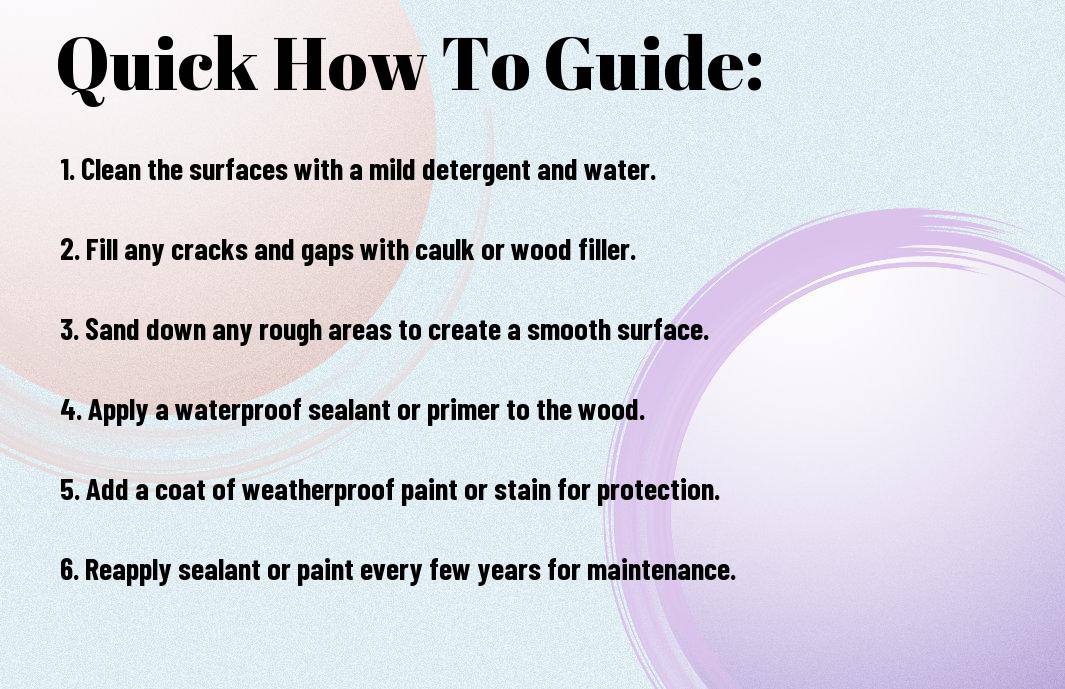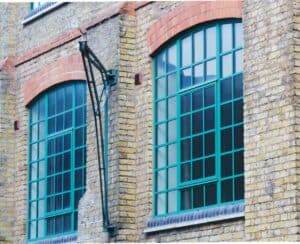Greetings, esteemed readers, and welcome to our comprehensive guide on how to weatherproof your wooden doors and windows. In this post, we will delve into the essential techniques and materials required to protect your home from the harsh elements, especially in the unpredictable British climate. The importance of proper weatherproofing cannot be overstated as it can prevent costly damage to your property, improve energy efficiency, and enhance the lifespan of your wooden fixtures. From identifying vulnerable areas to selecting the right sealants, our expert advice will equip you with the knowledge you need to safeguard your doors and windows effectively. So, without further ado, let us begin our journey towards a weatherproof and secure home.
Key Takeaways:
- Choose the right materials: When weatherproofing wooden doors and windows, make sure to select high-quality sealants and paints that are designed specifically for outdoor use.
- Regular maintenance is key: Keep an eye on the condition of your wooden doors and windows and perform regular inspections and touch-ups to prevent water damage and rot.
- Proper installation is crucial: Ensure that your doors and windows are properly installed with tight seals to prevent water penetration.
- Consider adding protective coatings: Applying a protective coating such as varnish or polyurethane can provide an extra layer of defence against the elements.
- Seek professional help when needed: If you are unsure about weatherproofing techniques or if extensive repairs are required, it is advisable to seek help from a professional to ensure the job is done properly.

How-To Guide: Preparing Your Doors and Windows
When it comes to weatherproofing your wooden doors and windows, preparation is key. Ensuring that your entry points are properly sealed can keep your home warm, dry and secure. In this guide, we will take you through the necessary steps to prepare your doors and windows for weatherproofing.
For detailed information on how to weatherproof your front door, click here.
Identifying Areas That Need Weatherproofing
Before you can weatherproof your wooden doors and windows, it is important to identify areas that may be vulnerable to the elements. Look for gaps, cracks, or rotting wood that may compromise the integrity of your entry points. These can be found around the edges of the door or window frames, as well as in the seals and hinges.
It is essential to address any weak spots before applying weatherproofing treatments to ensure that your efforts are effective in keeping out moisture and draughts. Ignoring these areas can lead to potential structural damage and energy loss.
Tools and Materials Required for the Job
Equipping yourself with the right tools and materials is crucial for successfully weatherproofing your wooden doors and windows. You will need a few essential items including caulking gun, weatherstripping, wood putty, sandpaper, and exterior-grade paint or clear sealant. These supplies will enable you to fill gaps, repair damage, and provide a protective finish to your entry points.
It is important to use high-quality products that are specifically designed for weatherproofing, as they will offer better durability and protection. Ensuring that you have the right tools and materials on hand will make the process more efficient and effective.
Having the appropriate tools and materials will ensure that the weatherproofing process is carried out with precision, and that your wooden doors and windows are adequately protected against the elements, promoting their longevity.
In the chapter ‘Weatherproofing Techniques’, we will discuss various methods to protect your wooden doors and windows from the harsh effects of weather. By implementing these techniques, you can ensure the longevity and durability of your timber fixtures.
Sealing and Caulking Windows and Doors
One of the fundamental steps in weatherproofing wooden doors and windows is sealing and caulking. Water can seep through gaps and cracks, causing damage to the wood and leading to potential rot and decay. Utilising high-quality sealants and caulking compounds can effectively prevent water infiltration. For a detailed guide on how to waterproof a timber door, you can refer to this resource on Bunnings Workshop.
Applying Protective Coatings and Varnishes
Another essential technique for weatherproofing wooden doors and windows is applying protective coatings and varnishes. These products not only offer a barrier against moisture, but they also protect the wood from UV rays, which can cause discolouration and deterioration over time. Ensure that the coatings and varnishes you use are specifically designed for exterior use and provide long-lasting protection against the elements.
When applying protective coatings and varnishes, it’s crucial to thoroughly prepare the surface by sanding and cleaning it to ensure maximum adhesion and effectiveness of the product. Additionally, regular maintenance and reapplication of these protective solutions are necessary to uphold their weather-resistance properties and safeguard the wooden fixtures against the outdoor elements.

Maintenance Tips for Long-Term Protection
Protecting your wooden doors and windows from the elements is crucial for their longevity. By following these maintenance tips, you can ensure long-term protection for your valuable investments.
- Regular inspections and touch-ups
- Cleaning and care for weatherproofed surfaces
Assume that Weatherproofing Windows and Doors: Ultimate Guide provides valuable additional insights into the importance of weatherproofing.
Regular Inspection and Touch-up Tips
Regularly inspecting your wooden doors and windows for any signs of wear and tear is essential for maintaining their long-term protection. Make sure to look for cracks, peeling paint, or water damage and address them promptly to prevent further deterioration. Recognising early warning signs can save you from costly repairs in the future.
Cleaning and Care for Weatherproofed Surfaces
Proper cleaning and care for your weatherproofed surfaces is vital for their durability. Regular cleaning with a mild detergent and gentle scrubbing can help to remove dirt and grime, while a fresh coat of sealant or paint can provide additional protection against the elements. By following these cleaning and care tips, you can maintain the integrity of your doors and windows for years to come.

How to Weatherproof Your Wooden Doors and Windows
In conclusion, weatherproofing your wooden doors and windows is essential to protecting them from the elements and ensuring their longevity. By following the steps outlined in this guide, you can effectively seal any gaps, cracks, or weaknesses in the wood, keeping moisture and draughts at bay. Additionally, regular maintenance and inspections will help to identify and address any weatherproofing issues before they become significant problems. By taking the time to weatherproof your wooden doors and windows, you can improve their energy efficiency, enhance their appearance, and ultimately extend their lifespan.
FAQ
Q: Why is weatherproofing wooden doors and windows important?
A: Weatherproofing helps to protect the wood from damage caused by moisture, UV rays, and temperature changes, prolonging the lifespan of your doors and windows.
Q: What are the common methods of weatherproofing wooden doors and windows?
A: Common methods include using sealants, paints, varnishes, and applying weather stripping to create a tight seal.
Q: How often should I weatherproof my wooden doors and windows?
A: It’s recommended to check and reapply weatherproofing every 1-2 years, or sooner if you notice signs of wear and tear.
Q: What are the signs that my wooden doors and windows need to be weatherproofed?
A: Look out for peeling paint, water damage, drafty areas, and visible cracks or gaps in the wood, as these are indicators that weatherproofing is needed.
Q: Can I weatherproof my wooden doors and windows myself, or should I hire a professional?
A: While some methods can be DIY, it’s best to consult a professional for advice and assistance, especially for larger or more complex projects.













